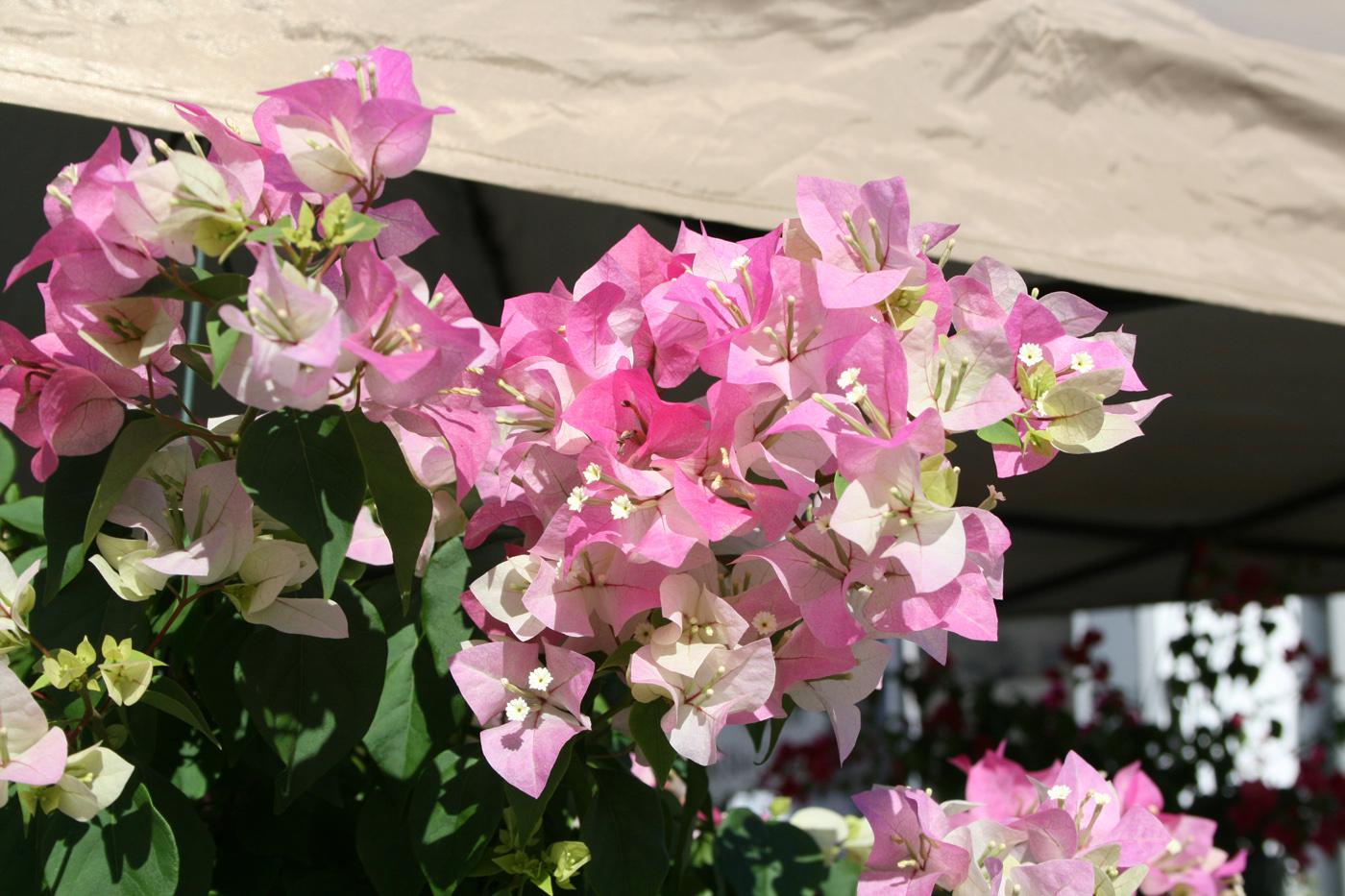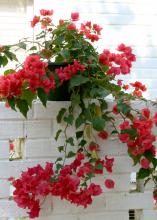Information Possibly Outdated
The information presented on this page was originally released on May 21, 2012. It may not be outdated, but please search our site for more current information. If you plan to quote or reference this information in a publication, please check with the Extension specialist or author before proceeding.
Bougainvillea lend tropical flair to home landscapes
If you’re looking for a little tropical flair for your home garden or landscape, consider bringing in some bougainvillea. This plant is especially gorgeous when displayed in a hanging basket that shows off its many flowers with almost iridescent colors.
Bougainvillea comes from the equatorial regions of South America, where it blooms nearly year-round. The long blooming season is possible there because the length of the days and nights are almost identical. In Mississippi, we are limited to the spring and fall seasons to enjoy the flowers.
The flowers are actually colorful bracts. They are tube-shaped and are summer feeding favorites of hummingbirds.
I have received calls about bougainvillea that will not bloom. Most of the time, this is a result of the plant not receiving enough light. Bougainvillea must go through a period of vegetative growth, when the stems and leaves are growing. During this growth phase, flower buds will form if there is enough sunlight, usually at least five to six hours per day.
Once the bougainvillea starts flowering, the bloom period can last up to five weeks if the plant receives five or more hours of sunlight each day. If you keep a bougainvillea indoors, you’ll have to settle for a nice, green houseplant rather than a blooming sensation.
Bougainvilleas tend to be heavy feeders, but they are sensitive to too much nitrogen, which can reduce flower production. Use a fertilizer with a 1-2-1 nutrient ratio, such as 10-20-10. Water-soluble formulations are the easiest way to fertilize them.
Bougainvilleas are susceptible to root rot. When growing them in containers, always use a commercial potting mix that offers really good drainage but does not dry out completely.
The root system of bougainvillea is very fine and does not like to be disturbed. In fact, these plants like to grow in root-bound containers, so choose a small container for your plant. If you feel the need to re-pot, never root prune. Leave those delicate roots alone.
Bougainvillea is a vining-type plant; its stems grow outward rather than to the sides. If its growth is not managed, the bougainvillea will form flowers only at the very tips of the shoots.
This is OK if you want only long, flowering stems, but for a much prettier effect, prune the shoot tips. This will signal the lateral buds to grow along the stem and will result in a fuller-growing plant with many more flower buds to enjoy.
In the coastal counties, bougainvillea can be left outside all winter except during extreme cold weather snaps. In other counties, you must provide winter protection unless you just want to treat your bougainvilleas as annuals.
If you choose to bring them indoors, place them in a south-facing window. Treat the plant like you would any other houseplant until you move it outside next spring. Bougainvillea also will overwinter well in a dormant state in the garage or other cool areas that have low light. In a dormant state, water the plant once a month so the potting media does not dry out completely.









